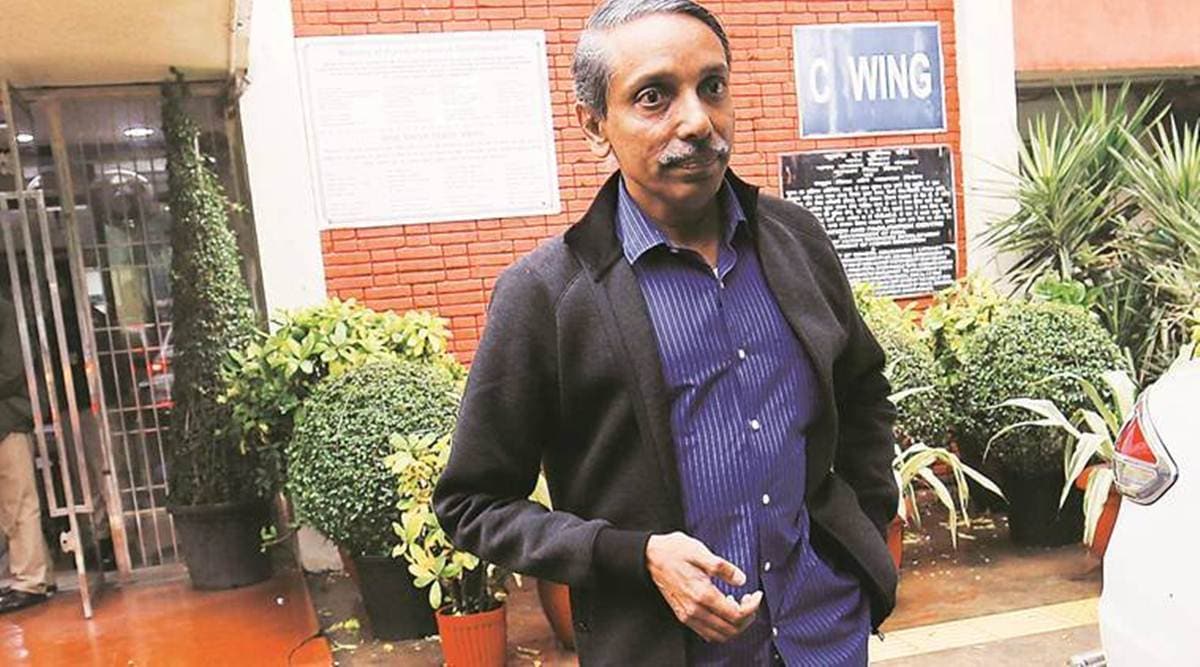 UGC chairperson Prof M Jagadesh Kumar.
UGC chairperson Prof M Jagadesh Kumar. On Monday, University Grants Commission (UGC) chairperson Prof M Jagadesh Kumar announced that from the academic session 2022-23, admissions to undergraduate courses in central universities such as the University of Delhi will be carried out through a common entrance.
The next day, the UGC also issued a public notice, formally making the announcement. However, the commission has not yet issued the guidelines that will govern the proposed entrance — Common University Entrance Test (CUET) — which is likely to be held in the first week of July.
On Wednesday, at an interaction with , Prof Kumar tried to address some of the frequently asked questions concerning the test that will be conducted in 13 different languages — Hindi, Marathi, Gujarati, Tamil, Telugu, Kannada, Malayalam, Urdu, Assamese, Bengali, Punjabi, Odia and English.
What will be the format of the test and how will be designed?
The test will conducted in two sessions of roughly about four hours duration each. In the first session, a student has to attempt one language paper out of 13 languages (as specified above). They can also choose two domain subjects out of 27 and then if a student chooses to write, they can also write a general test. In the second session, the student can take up to four domain subjects and also write a language test. In this case, the student can pick any language from a list of 19 — French, Spanish, German, Nepali, Persian, Italian, Arabic, Sindhi, Kashmiri, Konkani, Bodo, Dogri, Maithili, Manipuri, Santhali, Tibetan, Japanese, Russian and Chinese. This will be for those looking to sign up for UG degree programmes in foreign languages offered by certain Central Universities.
What are the domain subjects on offer and what will the general test be about?
The 27 domain subjects are Accountancy/ Book Keeping, Biology/ Biological Studies/ Biotechnology, Business Studies, Chemistry, Computer Science/ Informatics Practices, Economics/ Business Economics, Engineering Graphics, Entrepreneurship, Geography, History, Home Science, Knowledge Tradition–Practices India, Legal Studies, Commercial Arts, Mathematics, Physical Education/ NCC, Physics, Political Science, Psychology, Sociology, Teaching Aptitude, Agriculture, Mass Media/ Mass Communication, Anthropology, Fine Arts/ Visual Arts (Sculpture/ Painting), Performing Arts and Sanskrit.
The general test will assess a candidate’s general knowledge, current affairs, general mental ability, numerical ability, quantitative reasoning, logical and analytical reasoning among others.
How will universities prepare merit lists and admit students based on the CUET?
The CUET will not rank students, it will simply provide them scores. There will be negative marking for wrong answers in the test which will be computer-based and will have multiple choice questions (MCQ format). Marks scored in the class 12 board exam will not be given any weightage, however, universities have been given the option to use board exam scores in one count. For example, a particular university can say, irrespective of a candidate’s score in the CUET, their application for admission will be considered only if they score at least 60 per cent in the boards exams. But that will vary from university to university and not all of them will use board exam scores as qualifying criteria. There will be more clarity on this aspect after the guidelines are formally issued.
How necessary will it be for a student to take special coaching to clear CUET?
Prof Kumar believes coaching will not be necessary as the questions in the test will be based on NCERT syllabus which is widely accepted in the country. However, the UGC is mindful of the fact that there are some differences when it comes to certain state boards.
“These issues (board-wise syllabus variations) will be taken into account. These exams are not going to be like the IIT exams. Experts will moderate the difficulty level and questions will be confined to class 12 syllabus alone,” Prof Kumar said. He added, “In the case of the IIT entrances, over a million candidates compete for around 16,000 seats. But in the case of central universities, Delhi University alone has around 70,000 seats and when the other universities (total 45) are taken into account, there will be a couple of lakhs seats. The ratio of seat against applicants will be 1:5 as against 1:50 or 1:60 in the case of IITs. In the case of IITs, tough questions drive people to coaching. But in CUET, difficulty level of questions will be moderated so that students are comfortable without coaching.”
- The Indian Express website has been rated GREEN for its credibility and trustworthiness by Newsguard, a global service that rates news sources for their journalistic standards.

